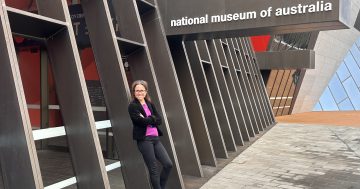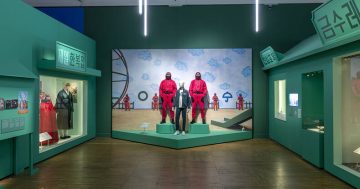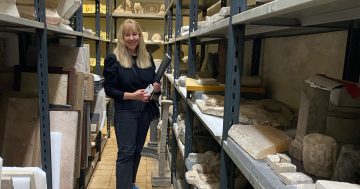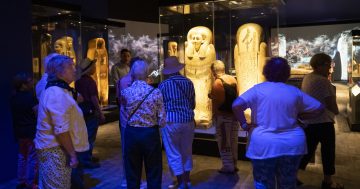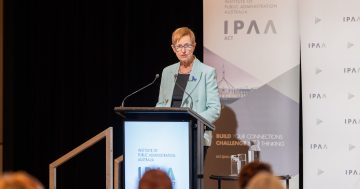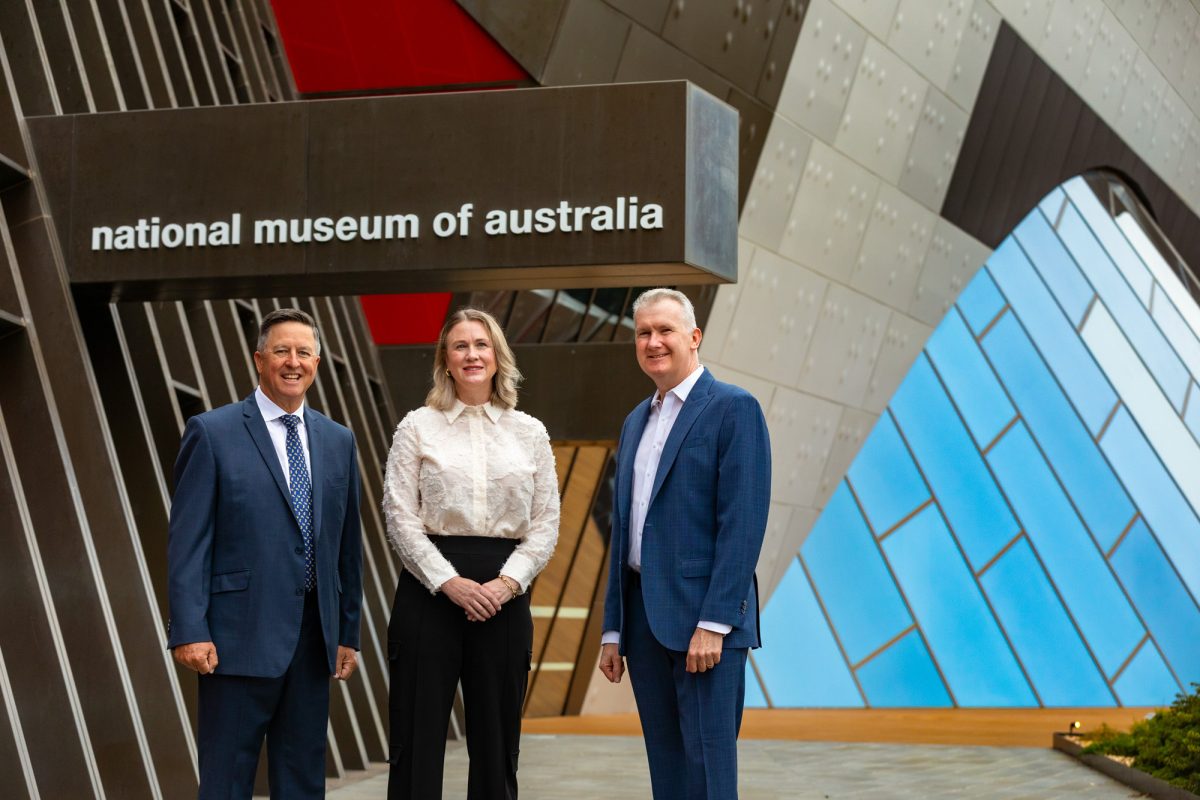
New director of the National Museum of Australia, Katherine McMahon, with NMA Council chair Ben Maguire and Arts Minister Tony Burke after the announcement of her appointment. Photo: NMA.
Katherine McMahon has all the right credentials for her new position as director of the National Museum of Australia (NMA) in Canberra.
She has been acting in the role since the departure of former CEO Matt Trinca, was deputy director under him and assistant director of discovery and collections before that – tallying up a total of seven years at the NMA.
But her connection with the leading cultural institution goes way beyond that … she was born at the Canberra Hospital, the site on which the NMA stands today.
She was also educated at the Australian National University and holds a Bachelor of Arts (Art History and Curatorship) with majors in History and Art History.
“I can look out the window here to perhaps where my mother came in to give birth,” she said.
“It’s a good symmetry to have such a deep connection with a place.”
Ms McMahon said she was delighted to take on the top job, adding that before the NMA, she had worked at the Australian War Memorial for 15 years.
“I’m a pretty loyal kind of person,” she said.
“I’ve devoted two decades of my life to cultural institutions – but there was always something about the National Museum. I always kept my eye on it. I was keen to work with Matt Trinca, and I was fortunate to do so. I now have that inside knowledge of the institution as well as a broader knowledge of other institutions.
“I’m honoured to accept the position of director of the National Museum, a globally acclaimed and locally trusted and cherished institution, which has a unique mandate to explore our national identity, providing a place for every story.”
Ms McMahon said the NMA had an important role as a storyteller. With its vast collection, she wanted to attract people to come through the door to see the physical objects as much as tell the museum’s stories online – to reach audiences on the other side of the country – and the world.
One of the museum’s most popular exhibitions, Songlines, is currently doing just that, touring the world. She said it would soon go to North America and Asia, and after a stint in Europe, it would open in Finland.
“It would be good to see it go even further.”
Ms McMahon said one of the greatest pleasures of her time at the NMA so far had been her involvement in acquiring the Trevor Kennedy collection.
The process of the museum acquiring the remarkable 5000-strong collection of Australian furniture, ceramics, jewellery and art was more than a decade in the making.
“It was incredible to meet him and work with him,” she said.
“I worked with a wonderful colleague, Sophie Jensen, to acquire this collection, a collection he amassed over a lifetime, so it was very special.”
Even today, when she’s after a quiet moment at work, Ms McMahon said she often ventures into the Great Southern Land gallery where some of the Kennedy collection is on display.
There’s a specific showcase, she says, with some of Kennedy’s collection of ceramic animals on show, that she always veers towards.
“There’s a yawning koala in there that I just love,” she said. “That’s where I like to go.”
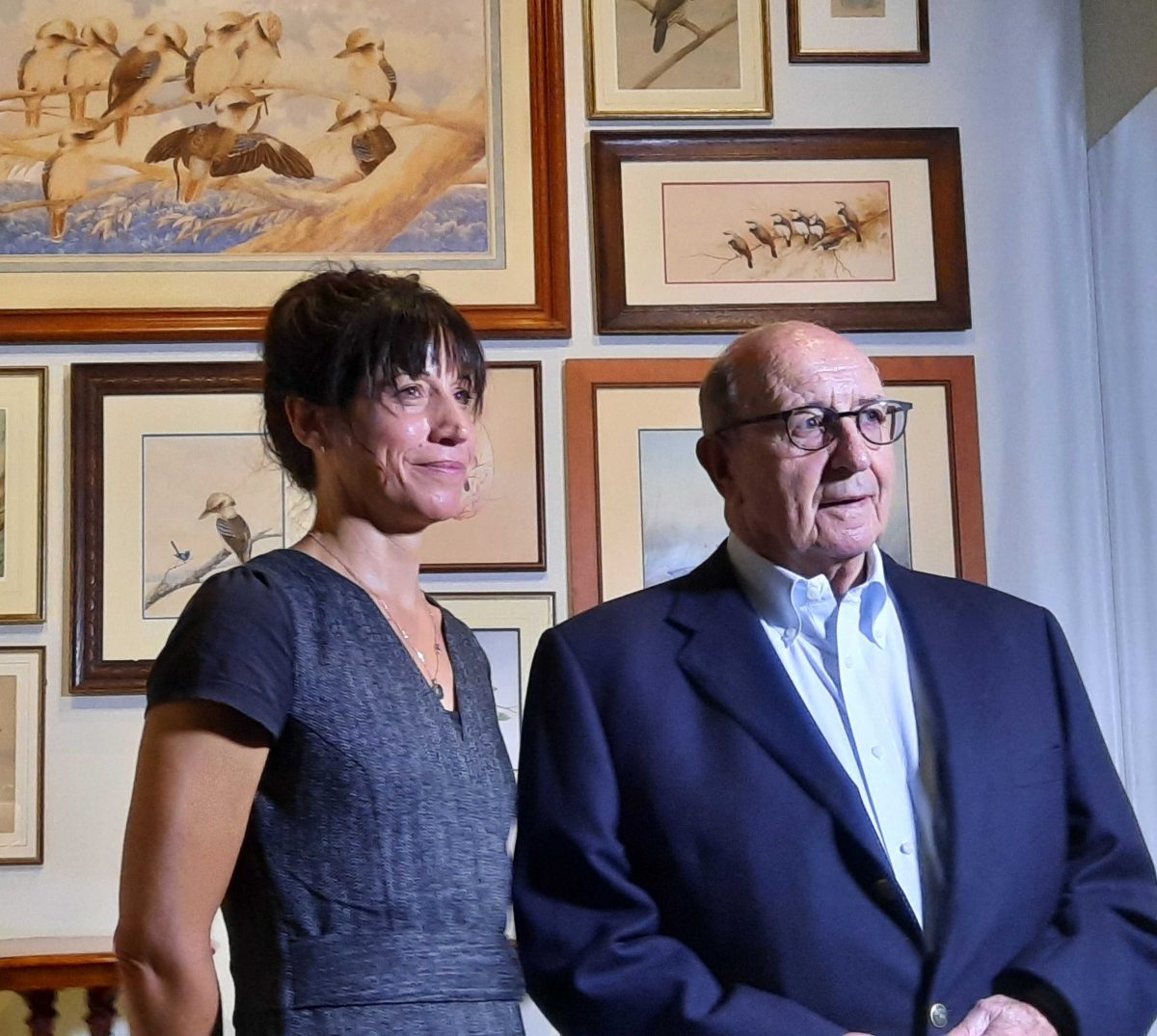
Curator Sophie Jensen with the late Trevor Kennedy in 2021 when the NMA acquired treasures from his collection. Photo: Ian Bushnell.
Her other priority is to increase the reach of the museum’s Australia’s Defining Moments Digital Classroom to school students across the country.
“The National Museum has reached deeply into classrooms across the country, and I am committed to investing further to broaden and deepen participation and to cement the organisation’s position as the country’s most trusted online Australian history resource,” she said.
“Sharing our extraordinary national collection with onsite, offsite and online visitors in bold and exciting ways is fundamental to the museum’s mission – our programs will take the Australian story to more people, wherever they are, over my tenure.”
Chair of the National Museum Council Ben Maguire congratulated Ms McMahon on her appointment, which he said had the council’s unanimous support.
“The National Museum’s Council is delighted by this appointment – Katherine McMahon will provide the leadership, ambition and vision to build on the institution’s successes to date and drive the organisation through its next pivotal phase,” Mr Maguire said. “We can’t wait to see where she takes the museum in the years ahead.”
Original Article published by Sally Hopman on Riotact.


